|
|
Science Highlights

The Value of Fisheries Science
For about one penny per American per month we promote the prosperity of fisheries and marine resources in an area about the size of California. We support fisheries that contribute more than $14 billion to our economy, study and monitor 100 fish, shellfish, marine mammal and sea turtle stocks, observe over 4000 commercial fishing trips, provide over 300 algal cultures to aquaculture businesses and researchers, and more.
|
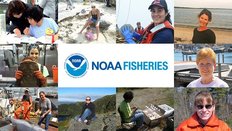
Women’s History Month
In March we celebrated Women’s History Month and asked five of our women scientists to share a little about their science journey—what hurdles or obstacles they’ve experienced, how they overcame them, and what advice they have for the next generation of women scientists. Meet Holly McBride, Katie Shelledy, Yuan Liu, Lisa Colburn and Amanda McCarty.
|

Summer Flounder and Atlantic Striped Bass Assessments Completed
We recently completed two assessments for summer flounder and striped bass. The results indicate that summer flounder are not overfished and overfishing is not occurring, and that Atlantic striped bass are overfished and overfishing is occurring. Both assessments went through a comprehensive science peer review process that included review by external experts.
|

Planting Atlantic Salmon Eggs
Each winter from mid-February to early March scientists from many organizations embark on a collaborative effort to plant Atlantic salmon eggs into gravel-bottomed Maine Rivers and streams. The egg-planting technique has been used in Maine’s salmon rivers for the past decade to help restore and conserve this endangered species.
|
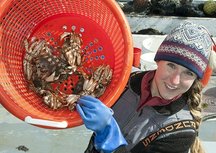
Meet the New Cooperative Research Branch Chief
Anna Mercer joins the Northeast Fisheries Science Center as the new chief of our Cooperative Research Branch—a branch devoted to connecting fishermen with scientists on applied fisheries research. Anna was most recently the Executive Director of the Commercial Fisheries Research Foundation in Rhode Island and brings years of experience in engaging fishermen in high-quality scientific research.
|

Right Whales Seen in High Numbers South of Cape Cod
Right whales have been seen by our marine mammal researchers in waters south of Cape Cod and Nantucket since mid-November, with as many as 100 individual whales observed on a single aerial survey in January. Our staff aboard research vessels are also photographing as many individuals as possible and collecting genetic samples from whales not previously sampled to learn more about them. Aerial surveys with the NOAA Twin Otter aircraft will continue through mid-May before our right whale efforts turn to surveys in both U.S and Canadian waters through the summer.
|
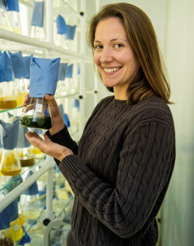
Meet the New Face of the Milford Microalgal Culture Collection
We recently welcomed Lisa Guy, the new permanent curator to maintain the Milford Microalgal Culture Collection. This renews our long commitment to providing high quality microalgal cultures to industry and training on their use in shellfish aquaculture. Lisa comes to us after ten years with the Horn Point Oyster Hatchery in Cambridge, MD, where she was head algologist. The Milford Culture Collection supports shellfish research and is an extension service. In 2018 alone, our Milford lab sent out more than 375 starter cultures throughout the United States and beyond.
|

Gulf of Maine Bottom Longline Survey: Using otoliths to fill data gaps
Fish ear bones or otoliths are invaluable to fisheries scientists to determine the age of fish and how fast they grow, helping improve the precision of the data collected at sea and to estimate abundance in a fishery. During our Bottom Longline Survey some depredation of the catch (damaged and/or partially consumed) by spiny dogfish, Atlantic hagfish, and other species occurs. Depredated catch often lack a measurable length or weight. Otoliths collected from these fish allows scientists to precisely estimate the length and weight of the depredated catch. Estimations of length and weight have been established for red hake and haddock while work on white hake is ongoing.
|
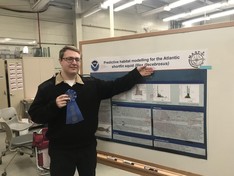
Sandy Hook Students Awarded at Science Fair
Two of our high school mentees, Jack Kelly and Jonathon Lopes, from the Marine Academy of Sciences and Technology (MAST) Sandy Hook, NJ received a first place ribbon at the 2019 Jersey Shore Science Fair. Jack and Jonathon were mentored by our Physical Science Technician Jeffrey Pessutti of the Sandy Hook Laboratory on their project to develop a predictive habitat model for Shortfin Squid.
|
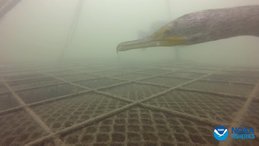
Avian Predator Using Oyster Cages to Hunt
Check out new GoPro footage from our Milford Lab’s oyster aquaculture study of a cormorant preying on fish in/around experimental oyster cages in Long Island Sound. This is the first evidence of avian predator behavior in this study.
|
|
|
|
|
|